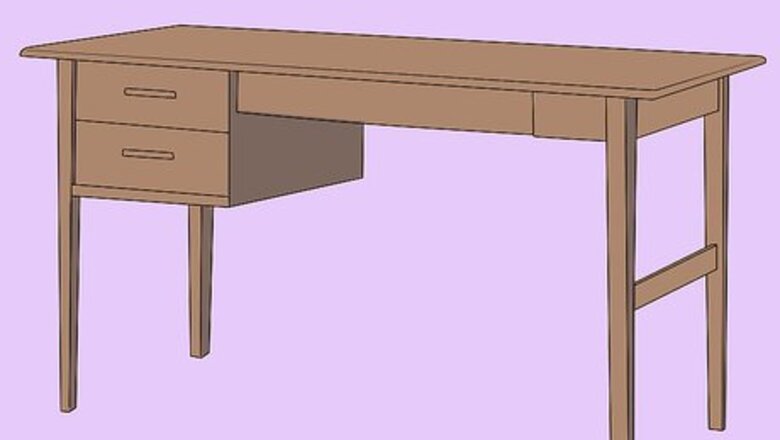
views
Practicing with Your Equipment
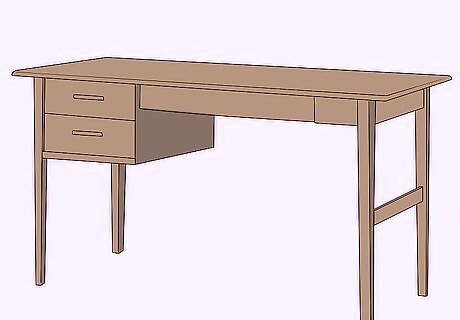
Find a desk or large table for you to practice at. Make sure whichever arm you hold the soldering iron with has enough room and that you won’t be bumping into things while you practice. Remove all of your excess items from your workspace The floor is an OK surface to work on but if it's uneven, it makes soldering quite challenging. Tables and large desks are more suitable options. Having a well laid out area is so important to helping you improve as it allows you to focus and pay attention to all of the small things that you may be doing wrong or missing when you solder normally.

Start by touching the metal you're working on with the hot iron and the solder. Soldering is done by heating the metal surface with the soldering iron and then placing the solder onto the surface so it melts. Make sure to hold the iron on the surface only for a few seconds so you don't burn it. The amount of solder you should use varies depending on the connection that you need to make, but if you're just starting to practice, try for a small dot about half the size of a fingernail.
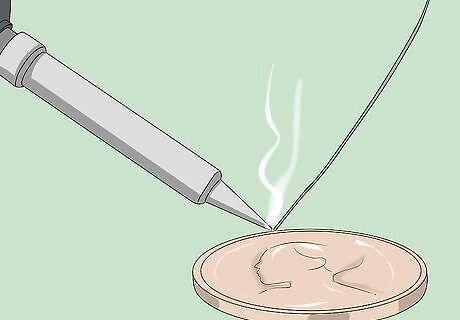
Practice accuracy by soldering onto a specific point on a coin. Aim for a very specific point that you are trying to solder. Use a coin or some other kind of low-cost metal that won’t prove costly if you end up making a bit of a mess. Remember, you are heating up the area being soldered and letting the solder flow onto it. You are not simply touching the solder and letting it drip. Diving straight into real projects that require a high degree of accuracy can be a bit risky and can also end up being quite expensive as you may ruin the electrical components you need for these projects. Aluminum-based coins don’t work quite as well as other alloys so if you’re concerned about the makeup of your coin, clarify the composition with a quick google search.
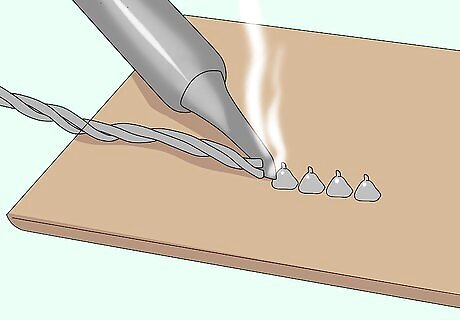
Try applying solder to several points in a row to improve your precision. When practicing on an old circuit board or a cheap piece of metal, apply the same amount of solder to 10 points in a line. Make sure to lift the soldering iron upwards once the correct amount of solder has been applied. This helps release the melted solder from the soldering iron. Repeating this motion allows you to work on the amount of solder that you are actually applying to the electrical component. You can even draw the 10 dots with a pencil and then solder as closely onto those as you can.
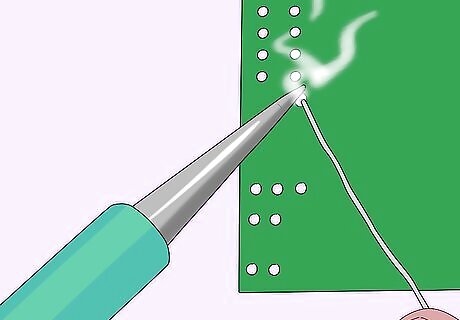
Practice applying solder as quickly as you can so you get faster. See how fast you can apply the solder to a cheap piece of metal while still being accurate. Start by soldering some points slowly then work your way up to applying the solder faster. Applying solder quickly is important because when you're soldering, you must heat up the part of the component you want to solder, using your soldering iron. If the soldering iron is left for too long, the component can burn and will sometimes no longer be usable. Soldering efficiently without looking rushed is one of the marks of a well-practiced solderer and is a great thing to work on.
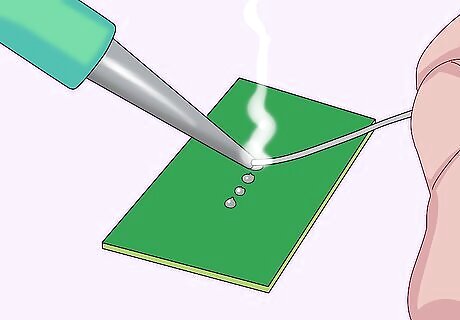
Work on different soldering projects consistently to help you improve. Try to find as many little things as you can to work on. Soldering is something that you really only improve at by doing, so the best way to get better is to just do as much soldering as you can! A couple examples of little projects you can work on are soldering a small LED light or connecting wires to a mini circuit board. Remember that it’s ok to make mistakes when you’re first starting out (or any time for that matter) and there’s nothing wrong with messing around on bits of metal or other pieces of junk for a while before you give the real thing a go.
Using the Right Equipment
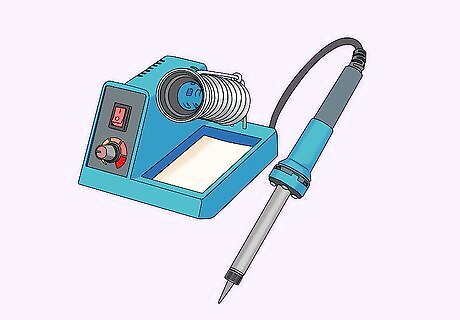
Buy a soldering iron that lets you control the temperature. Look for this information on the box or you can also ask a store clerk. This is really important as some soldering projects require the solder to be heated to a specific temperature. Having a temperature-controlled soldering iron will help you produce much better results if you are trying to improve. However, cheap, single-temperature irons are also OK if you're just looking for something to practice casually with. It's worth noting that many cheaper soldering irons often heat up to very high temperatures. This heats the solder up too high resulting in a poor connection and, sometimes, damage to the electrical component.
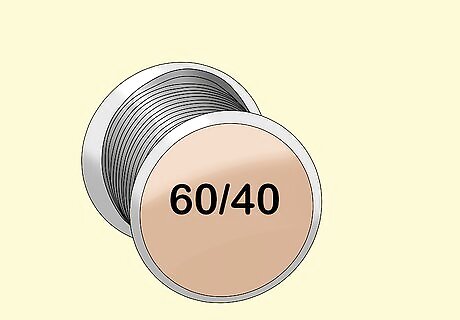
Get solder that is 60% tin and 40% lead. Look for this at your local hardware store. If you want to improve your soldering, try to buy a decent quality solder (if you can) as it is much easier to work with than cheap solder. Low quality 60/40 solder often won’t melt at the right temperature of 260 °C (500 °F) which makes it really difficult to work with. A high-quality solder should melt right on contact with a heated soldering iron. Lower quality solder has a more matte/dull color once it has been melted onto the connection point. This is a result of there being more impurities in the lead portion of the alloy. Soldering aluminum is challenging due to its high thermal conductivity and oxide layer formation. It is best to use a specialized aluminum solder, specifically formulated for aluminum surfaces. These solders often contain a flux core to help in the soldering process.

Get hold of some scrap-metal to practice on. You can use old devices you no longer use such as radios or an old toaster or things like that. Coins also work really well! Look for anything you can pull apart and that you no longer need or use. Make sure that any appliances you disassemble to practice on are turned off and disconnected from any power source. Practicing on a coin or some other kind of cheap piece of metal allows you to practice without the fear of ruining the electrical component.
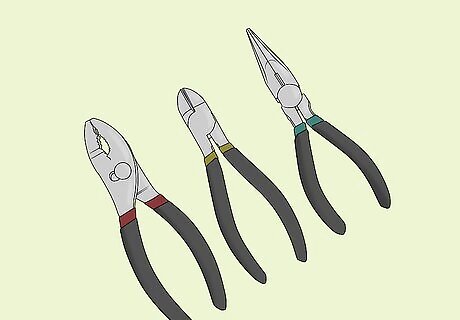
Get a good, sturdy set of pliers to hold any electrical wire. You can find these at your local electronics store, or home goods store. The quality of the pliers you buy is up to you, but if you spend more, they are much more likely to last a long time. Many people try to hold wire in place while the solder is cooling down and solidifying. This is really dangerous and can result in severe burns. Using pliers is significantly safer and means that you can get much closer to the actual connection point of the wire and the solder, without putting your fingers or hands in danger of being burnt.




















Comments
0 comment